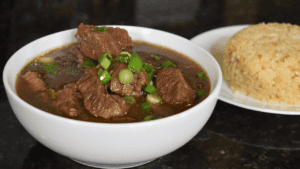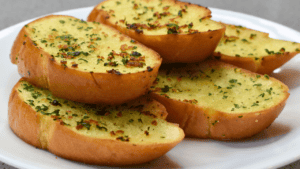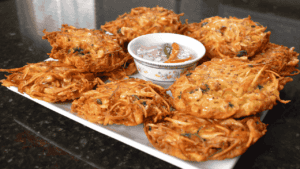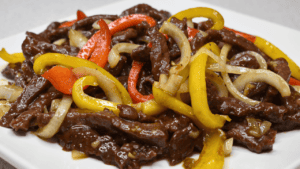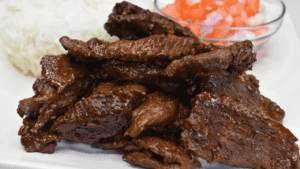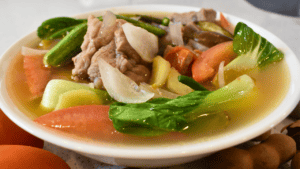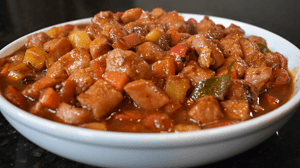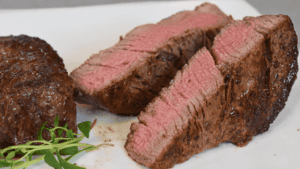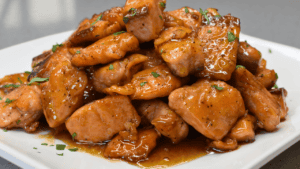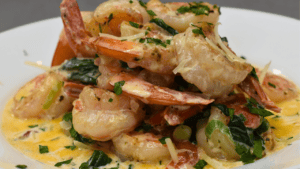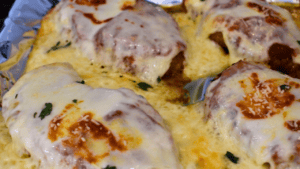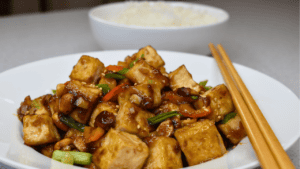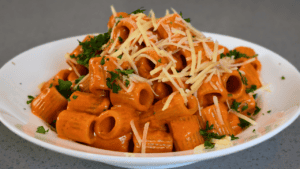Biko Recipe
Biko is a traditional Filipino dessert made from sweet glutinous rice, coconut milk, and brown sugar. It is typically served during special occasions or as an afternoon snack.
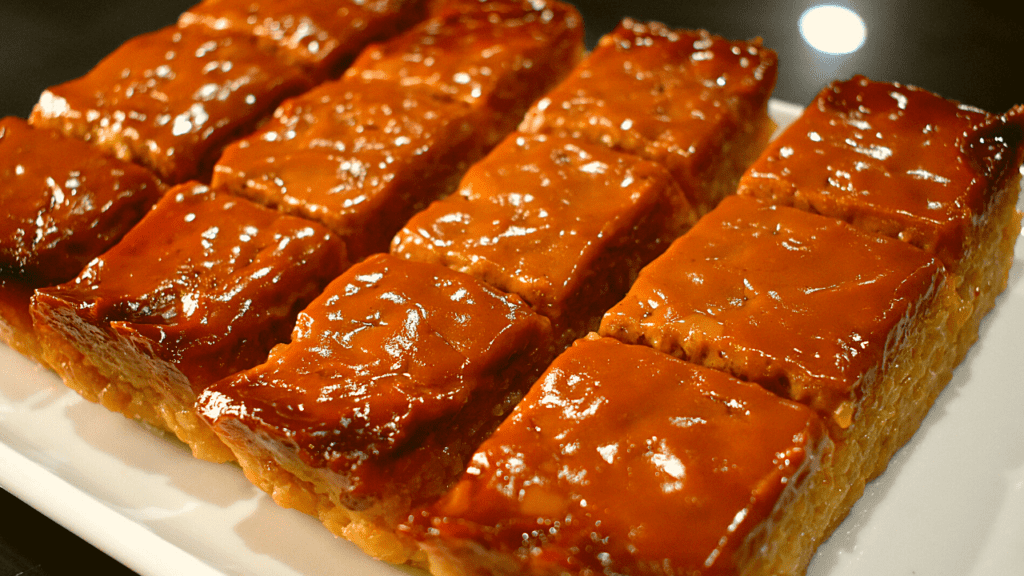
The Sweet Journey of Biko in Filipino Cuisine
Biko, a sweet rice cake, holds a special place in the heart of Filipino cuisine. This scrumptious dessert, made from sticky rice, coconut milk, and brown sugar, is more than just a treat; it’s a testament to the rich cultural heritage of the Philippines. Often featured during fiestas and family gatherings, Biko is cherished for its simplicity and the comfort it brings with each bite. Whether you’re a cooking novice or a seasoned chef, the process of making Biko is a delightful adventure that promises a rewarding outcome.
Ingredients and Their Role
The magic of Biko lies in its ingredients, which bring depth and character to the dish. The primary ingredient, sweet glutinous rice, is responsible for the cake’s chewy texture. This rice, unlike regular varieties, sticks together during cooking, giving Biko its signature consistency. Coconut milk, another key player, infuses the dish with a creamy richness that complements the sweetness of the brown sugar. Together, these components create a harmonious blend of flavors that is both comforting and satisfying.
The addition of brown sugar not only sweetens the Biko but also enhances its color, giving it a beautiful golden hue. This natural sweetener, derived from sugarcane, adds a complex caramel-like flavor that elevates the dessert to new heights. Understanding the role each ingredient plays is crucial in appreciating the nuances of this beloved dish.
Biko Step-by-Step Cooking Guide
Creating Biko is a straightforward process, perfect for those new to cooking. Start by rinsing the sweet rice until the water runs clear, ensuring that excess starch is removed. Combine the rice, brown sugar, coconut milk, and water in a pot, and cook over medium-high heat. Stir continuously to prevent the rice from sticking and burning, a key step in achieving the perfect texture.
Once the rice turns a beautiful golden brown, remove it from the heat and allow it to cool slightly. In the meantime, prepare the latik syrup by simmering coconut milk and brown sugar until the mixture thickens and caramelizes. This luscious syrup will serve as a topping, adding a glossy finish and additional sweetness to the Biko.
Transfer the cooked rice to a baking pan, spreading it evenly. Pour the latik syrup over the rice, ensuring even coverage. Bake in a preheated oven at 350°F for 25 minutes, then allow the Biko to cool before serving. This traditional method ensures a perfectly baked dessert with a delightful balance of textures and flavors.
Tips for Making the Perfect Biko
Achieving the perfect Biko requires attention to detail and a few insider tips. First, ensure your rice is adequately washed and drained to remove excess starch, which can affect the final texture. It’s also essential to maintain a consistent stirring motion while cooking the rice, preventing it from burning and sticking to the pot.
To enhance the flavor profile of your Biko, consider using freshly grated coconut instead of canned coconut milk if available. The fresh version offers a more pronounced coconut flavor that can elevate the dish. Lastly, be patient with the latik syrup, allowing it to caramelize fully for a richer, more decadent topping.
Variations and Additions
While traditional Biko is delightful on its own, there are numerous ways to customize the recipe to suit personal tastes and dietary needs. For a nuttier flavor, sprinkle toasted sesame seeds or crushed peanuts over the finished cake. Add a pinch of salt to the batter for a sweet-salty contrast that is sure to surprise and delight.
For those seeking a healthier alternative, try substituting the brown sugar with coconut sugar or honey. These natural sweeteners offer a different flavor profile while maintaining the dessert’s sweetness. Incorporating fruits such as sliced mangoes or bananas can add a fresh twist and enhance the visual appeal of your Biko.
Serving Suggestions
Presentation plays a crucial role in elevating the dining experience. Serve Biko on banana leaves for an authentic touch, or arrange the slices on a decorative platter for a more modern approach. Pair the dessert with a hot cup of coffee or tea to balance its sweetness and complement the flavors.
For a special occasion, consider creating a dessert platter featuring Biko alongside other Filipino treats like leche flan and puto. This combination showcases the diversity and richness of Filipino desserts, making it a delightful addition to any gathering.
Conclusion
Biko is more than just a dessert; it’s a cherished part of Filipino culture that has been passed down through generations. By understanding its ingredients, following the step-by-step guide, and incorporating creative variations, you can master this beloved dish and share it with friends and family.
Whether you’re a Filipino cuisine enthusiast or a cooking beginner, we hope this guide has inspired you to try your hand at making Biko. We invite you to share your experiences and join our community of food lovers. Subscribe for more delicious Filipino recipes and culinary insights.
Frequently Asked Questions About Biko Recipe
How many days does Biko last?
Biko typically lasts for about 3 to 4 days when stored in an airtight container at room temperature. To extend its shelf life, refrigerate it, and you can enjoy it for up to a week.
What is Biko made of?
Biko is primarily made from sweet glutinous rice, coconut milk, and brown sugar. These ingredients combine to create its distinctive chewy texture and rich flavor.
How to cook Biko with latik step by step?
Cooking Biko with latik involves preparing the sweet rice with coconut milk and brown sugar, then topping it with latik syrup made from caramelized coconut milk and sugar. The step-by-step guide provided in the article will help you achieve the perfect Biko.
What is the difference between Biko and Suman?
Biko and Suman are both traditional Filipino rice cakes, but they differ in preparation and presentation. Biko is a sticky rice cake baked with a topping of latik syrup, while Suman is typically wrapped in banana leaves and steamed, often without the addition of latik.
The end. But wait, there’s more!
Don’t let your Biko journey stop here. Explore other traditional Filipino desserts such as Puto Cheese, Cassava Cake, or Leche Flan to expand your culinary repertoire. And don’t forget to share your creations with family and friends, spreading the love and joy of cooking. Happy exploring!
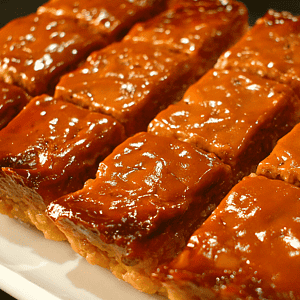
Biko Recipe
Ingredients
- 4 cups sweet rice rinsed and drained
- 1 cup brown sugar
- 2 cans coconut milk 400mL
- 2 cups water
For Latik Syrup
- 2 cans coconut milk 400mL
- 1 cup brown sugar
Instructions
- Rinse and drain the rice in a pot until the water runs clear.
- Add brown sugar, coconut milk, and water to the pot. Stir until well combined.
- Cook over medium-high heat, stirring constantly, until the rice turns golden brown.
- Remove from heat and allow it to cool.
- In a separate saucepan, mix coconut milk and brown sugar. Cook and stir until the mixture thickens and caramelizes.
- Transfer the rice to a baking pan and spread the caramelized syrup evenly on top.
- Bake at 350°F for 25 minutes.
- Remove from the oven and let it cool before cutting into your desired shapes.
